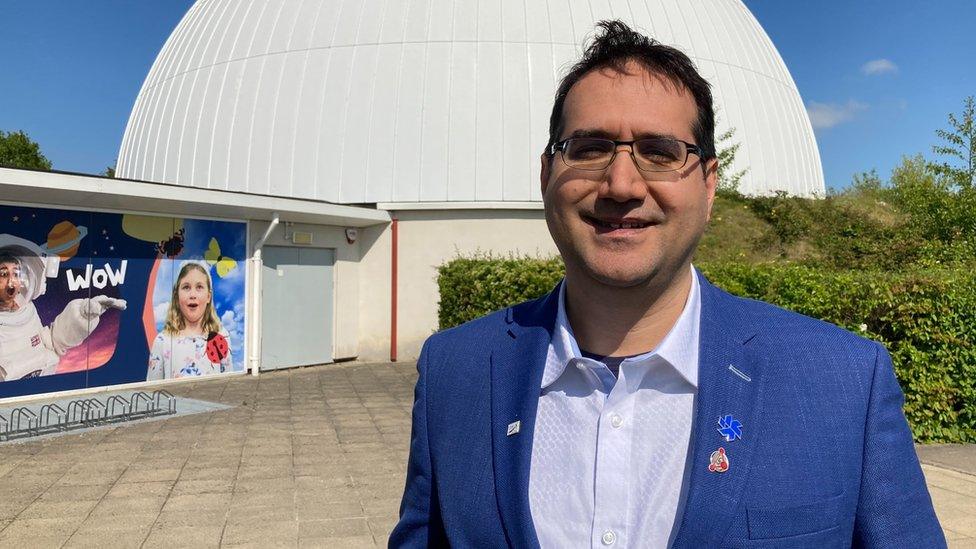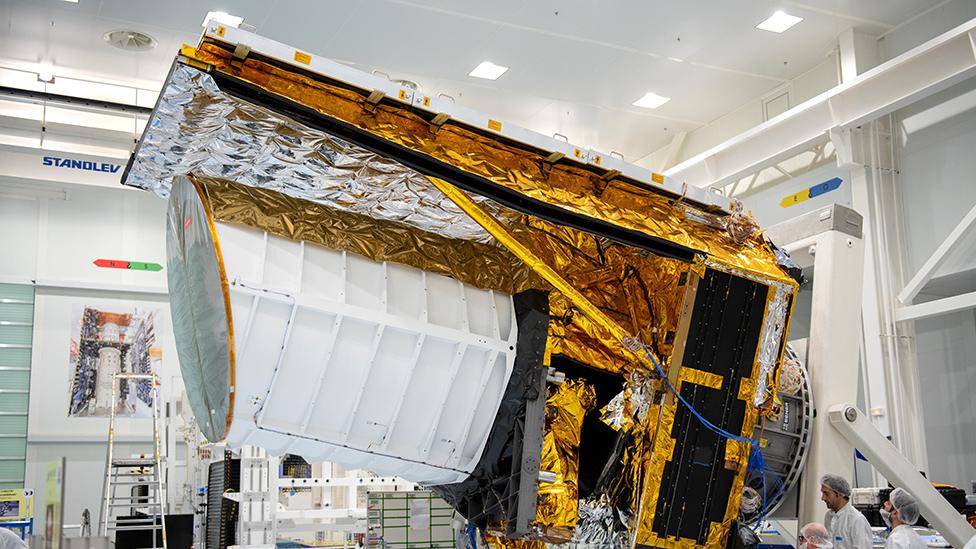Professor describes how satellite will look 10 billion years into past
- Published

Prof Adam Amara was 25 when he decided to work on the satellite project
A professor has described how a new satellite will look at 10 billion years of evolution in the the universe.
The £1bn Euclid project is the brainchild of Hampshire professor Adam Amara and inspired by his desire to uncover the dark universe's secrets.
Prof Amara said if next month's launch is successful it will give astronomers access to unique data.
It is being launched in Florida by Elon Musk's Space X company after 18 years of preparatory work by Prof Amara.

Euclid is named after the Greek mathematician Euclid of Alexandria and consists of two major components: the service module and the payload module.
Prof Amara, who is the director of the Institute of Cosmology and Gravitation at the University of Portsmouth, explained that only images of very small sections of the sky have been available so far.
Euclid will instead take high-resolution images that will cover more than one-third of the extragalactic sky outside the Milky Way.
It will also perform near-infrared spectroscopy of hundreds of millions of galaxies and stars over the same sky.
According to the European Space Agency, external (ESA), which is funding the project, the quality of the images will be "at least four times sharper than that achieved by ground-based sky surveys".
This would allow astronomers to find out more about the nature of dark matter and dark energy.
These phenomena appear to control the shape and expansion of the universe but virtually nothing is known about them.

Composition of the universe
Experiments indicate the cosmic contents include:
Roughly 5% normal matter - atoms, the stuff from which we are all made
About 27% dark matter - so far unseen directly and defying description
About 68% dark energy - the mysterious component accelerating cosmic expansion
The universe is calculated to be 13.8 billion years old.

Prof Amara acknowledged the entire project was risky, but said if it all went well, the material provided by Euclid would provide data that has never been available before.
He explained scientific satellites cannot be insured.
"It's a one-off. You make it work. No-one is insuring it. You don't get to rebuild," he said.
"These things do fail. It could go badly but you have to try."

Dark matter has been described as the scaffolding on which the visible structure of the universe is hung
A total of 2,600 people from across the world have worked on the project over the past 18 years.
It was in 2005 when the then 25-year-old Prof Amara turned down a job at Princeton University to work on his satellite idea in a laboratory in France.
"When you turn down a prestigious position... to work on an idea that probably is not going to fly, they think you are nuts," he said.
"Serious people would say that's committing career suicide, why would you do that?"
But he decided to persevere.
When asked how he would feel when the famous countdown would begin, he told BBC Radio Solent: "I don't know.
"I've never been through anything like this. It's new. It feels scary. Celebrating, crying if it goes up, crying if it blows up. They'll be a lot of tears."

Follow BBC South on Facebook, external, Twitter, external, or Instagram, external. Send your story ideas to south.newsonline@bbc.co.uk, external.
Related topics
- Published20 September 2019

- Published11 April 2023